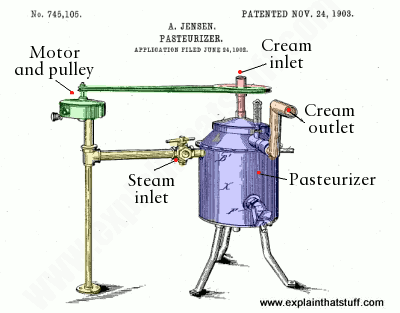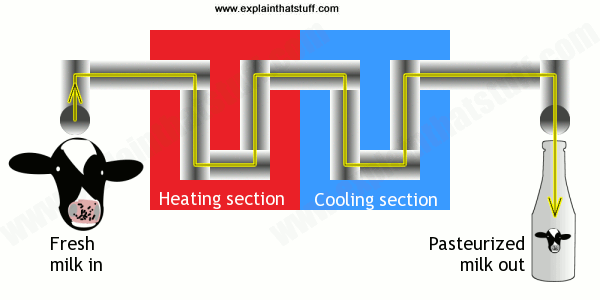- Преподавателю
- Иностранные языки
- Методическая разработка урока по английскому языку Pasteurization
Методическая разработка урока по английскому языку Pasteurization
| Раздел | Иностранные языки |
| Класс | - |
| Тип | Другие методич. материалы |
| Автор | Карибаева Г.И. |
| Дата | 02.12.2015 |
| Формат | doc |
| Изображения | Есть |
Сабақтың жоспары
План урока
Пән
Предмет
Prof. Engl.
Күні
дата
сабақтың №
№ занятия
Топ
группа
Тақырып Тема
Pasteurization.
Мақсат Цели
Білімділік Дидактическая •to fasten lexical and a writing skills on the topic
Дамытушылық Развивающая to develop monologue speech
ТәрбиелікВоспитывающая to bring up interest in the study of English culture.
Сабақтын типі (тұрпаты)
Тип урока
Lesson formation of writing skills.
Сабақтын әдісі
Метод обучения
Practical method.Collage.
Корнекілік Оснащение
Text,tasks
Сабақтын барысы Ход урока
1. Бағдарлану - мотивациялық блок Мотивационно - ориентировочный блок
Сабақтың тақырыбын шығу, жазу
Выход на тему, запись темы урока
Good morning, boys and girls! Nice to meet you! Sit down, please! What can you say about Pasteurization of milk?
Оқу мақсатын қою
Постановка цели, задач урока
formation of writing skills.
Сабақтың барысымен танысу Знакомство с ходом урока
Білім жаңғыртуы Актуализация знаний
Complete the sentences using the words given below: 1. Fluid milk for commercial distribution is usually ... . 2. ... is churned from cream. 3. Ice cream is the ... product. 4. Cheese is the product made from ... . 5. Industry processing milk is called ... industry. 6. After separation whole milk is separated into two fractions: .. and .. . 7. Clarifiers have one pipe for ... milk.
1. curd; 2. pasteurized; 3. whole; 4. cream; 5. butter; 6. dairy, 7. skim milk; 8. frozen

 Pasteurization of milk
Pasteurization of milk
2. Жана материалды мазмұндау (баяндау) Изложение нового материала
Read and translate: Pasteurization of milk
The value of heat for the preservation of foods has been known for thousands of years, but it was not realized until the 19th century that a very mild heat treatment, far below the boiling-point, made liquid foods such as milk keep much longer. The discovery followed the work of the French scientist Pasteur on wine and beer. The process, called after him "pasteurization", is a carefully controlled mild-heat treatment. It was found that the process served two purposes: it prevented the souring of milk, and it destroyed the dangerous disease germs which occur in some samples of milk.
Milk is rendered free of pathogenic bacteria by pasteurization. Milk is heated to a specified temperature and held at that temperature for a specified time. (145°F for 30 min when milk is pasteurized in a vat or at least 161°F for 15 sec when milk is pasteurized continuously).
Pasteurization on a batch operation requires a jacketed vat where steam or hot water can circulate and heat the milk. This treatment requires the longer times at lower temperatures to accomplish pasteurization (LTLT pasteurizer). Modern methods of processing milk and milk products utilize the high-temperature short-time (HTST) pasteurizer.
In Europe and to a limited amount in the United States, milk and milk products may be ultra-heat-treated (UHT). This process may use equipment similar to that used for HTST. The UHT processing requires a minimum heat treatment of 280°F for 2 sec. UHT dairy foods have extended shelf-life because all of the bacteria that would survive even HTST pasteurization have been destroyed.
How a pasteurizer works
A typical pasteurizer is completely automatic. You pour milk in one end and it flows between a set of heating pipes or plates for a set period of time (long enough to kill off most of the harmful bacteria), then between a set of cooling pipes, before emerging from an outlet pipe into the bottles:
Heating and cooling times and temperatures vary according to the type of pasteurization process being used.
Who invented the pasteurizer?

Steam pasteurizer: A typical early pasteurizing machine, developed by Aage Jensen of Topeka, Kansas in 1903. This one uses a steam-driven motor and pulley (green) to power an agitator that turns the cream inside a cylinder (blue) at several hundred times a minute. The exhaust steam from the motor feeds into the cylinder to heat and pasteurize the cream
3. Рефлексия бақылау блогы
Рефлексивно - оценочный блок
Білімдерін бекіту
Закрепление знаний
Find the English equivalents to the following Russian words:
1. Кратковременный метод при высокой температуре. 2. Тепловая обработка молока при сверхвысокой температуре. 3. Метод длительной тепловой обработки молока при температуре.
1. LTLT; 2. HTST; 3. UHT
Нәтижелерді жинақтап, қортындылау
Обобщение результатов, подведение итогов Conclusion of the lesson.
Рефлексия
Рефлексия Collage.
Үй тапсырмасы
Домашнее задание table
қолы ___________________
подпись ________________



